Understanding Magnetic Materials
Magnetic materials are substances that respond to a magnetic field and can either produce or be influenced by magnetism. They play a critical role in countless electrical, electronic, and industrial applications, from power generation to data storage.
Definition and classification of magnetic materials
Magnetic materials are generally classified based on how they react to an external magnetic field:
- Diamagnetic materials – Weakly repel magnetic fields (e.g., copper, gold)
- Paramagnetic materials – Weakly attracted to magnetic fields (e.g., aluminum, platinum)
- Ferromagnetic materials – Strongly attracted and capable of permanent magnetization (e.g., iron, nickel, cobalt)
Within ferromagnetic materials, we further divide them into soft magnetic materials and hard magnetic materials based on their magnetic properties and how they retain magnetism.
General magnetic properties to know
Every magnetic material has unique physical and magnetic characteristics that determine how it can be used:
- Permeability – How easily a material can be magnetized
- Coercivity – The resistance to demagnetization
- Remanence – The remaining magnetism after an external magnetic field is removed
- Saturation magnetization – The maximum magnetism a material can hold
- Hysteresis loss – Energy lost during magnetization and demagnetization cycles
Understanding these properties is key to selecting the right material for an application, whether it’s a transformer core that needs low energy loss or a permanent magnet that must maintain strong magnetism over time.
What Are Soft Magnetic Materials
Soft magnetic materials are metals or alloys that can be easily magnetized and demagnetized. They’re designed for applications where the magnetic field must switch direction often, with minimal energy loss.
Key Characteristics
- Low coercivity – takes little effort to magnetize or demagnetize
- High permeability – allows magnetic fields to flow easily through the material
- Low hysteresis loss – less heat and energy wasted during magnetizing cycles
Common Types
- Silicon steel – popular for transformer cores thanks to low losses
- Iron – widely used, low cost, and high magnetic performance
- Permalloy – nickel-iron alloy with very high permeability
Magnetic Properties
| Property | Soft Magnetic Materials |
|---|---|
| Coercivity | Low |
| Permeability | High |
| Hysteresis Loss | Low |
| Magnetization Retention | Weak (temporary) |
Manufacturing and Composition
Most soft magnets are made by alloying base metals like iron with silicon, nickel, or other elements. Manufacturing methods can include:
- Rolling and laminating sheets (for silicon steel)
- Powder metallurgy (for specialized shapes)
- Annealing heat treatments to improve grain structure and magnetic performance
Typical Applications
- Electrical transformers – for efficient voltage conversion with low loss
- Inductors – to store energy in magnetic fields
- Electric motors and generators – where rapid magnetic switching is needed
- Magnetic shielding – to block interference in electronics
Benefits
- High efficiency in AC applications
- Low heat generation due to minimal losses
- Easy to machine and shape for specific needs
Limitations
- Cannot hold magnetization without an external field
- Not suitable for permanent magnets
- Performance can drop at high temperatures or under mechanical stress
What Are Hard Magnetic Materials
Hard magnetic materials are the type of magnetic material designed to hold their magnetism over time. They have high coercivity, meaning they resist becoming demagnetized, and high remanence, which means they retain strong magnetization even after the external magnetic field is removed. These properties make them ideal as permanent magnets.
Common Types
- Neodymium magnets (NdFeB) – Extremely strong, widely used in motors, electronics, and EVs.
- Ferrite magnets – Affordable, corrosion-resistant, used in speakers and household electronics.
- Alnico magnets – Heat-resistant, common in sensors and vintage audio equipment.
Magnetic Properties
| Property | Hard Magnetic Materials |
|---|---|
| Coercivity | High |
| Magnetic Permeability | Low |
| Remanence | High |
| Magnetization Retention | Permanent |
| Hysteresis Loss | Higher than soft types |
Manufacturing and Composition
Hard magnets are often made from alloys of rare earth metals, iron, cobalt, aluminum, or barium ferrite.
Processes include:
- Powder metallurgy (pressing and sintering)
- Casting (common for alnico)
- Injection molding for custom shapes
Typical Applications
- Permanent magnets in motors, generators, and alternators
- Speakers and audio equipment for strong, consistent sound output
- Sensors in automotive and industrial systems
- Magnetic clamps, locks, and holding devices
Benefits
- Strong magnetic field for size
- Long lifespan with minimal performance loss
- Works well in static, long-term magnetic applications
Limitations
- Generally more brittle than soft magnetic materials
- Higher material cost (especially neodymium)
- Can lose strength at extreme temperatures depending on type
Direct Comparison Soft vs Hard Magnetic Materials
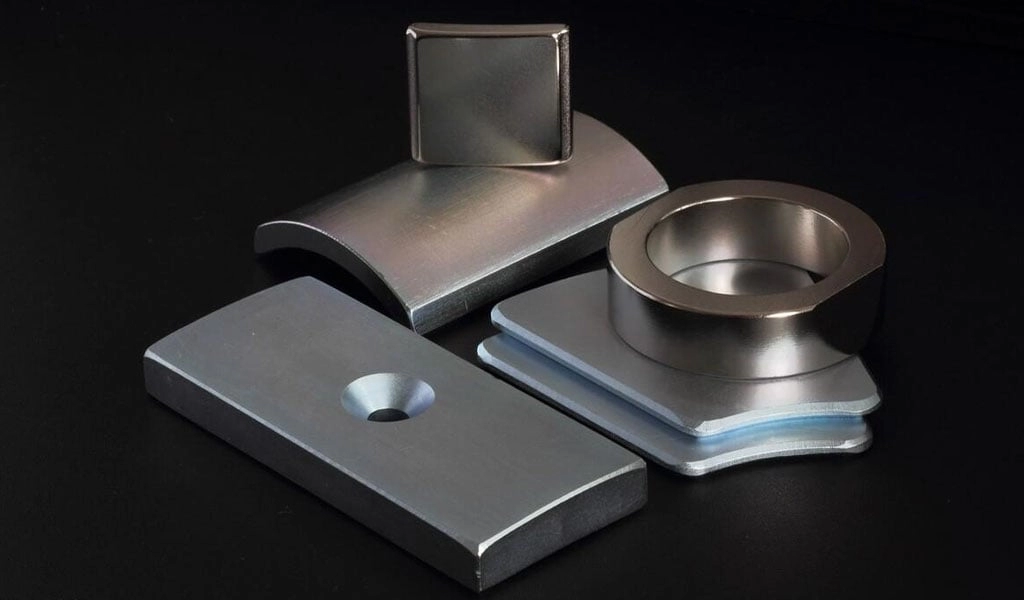
Soft and hard magnetic materials work in different ways, making them better suited for specific jobs. Here’s how they stack up against each other in key areas:
Magnetic Hysteresis and Coercivity
- Soft magnets have low coercivity, meaning they magnetize and demagnetize easily. This gives them a narrow hysteresis loop and reduces energy waste.
- Hard magnets have high coercivity, so they resist demagnetization. Their wide hysteresis loop means they retain strong magnetism over time.
Permeability and Saturation Magnetization
- Soft magnetic materials offer much higher magnetic permeability, allowing them to carry magnetic flux more efficiently.
- Hard magnetic materials have lower permeability but maintain high saturation magnetization, critical for strong, lasting magnetic fields.
Energy Losses and Efficiency
- In alternating current (AC) uses, soft magnets have low hysteresis and eddy current losses, making them highly efficient.
- Hard magnets are less efficient in AC applications but excel in steady, constant-field uses like permanent magnets.
Stability and Durability
- Hard magnets maintain magnetic strength for years, even in tough environments.
- Soft magnets lose magnetism quickly when not under an external field but are stable in operation-heavy applications like transformers.
Cost and Availability
| Feature | Soft Magnetic Materials | Hard Magnetic Materials |
|---|---|---|
| Common Materials | Silicon steel, permalloy, iron | NdFeB, ferrite, alnico |
| Raw Material Cost | Generally lower | Can be higher (rare earth content) |
| Availability | Widely available | Some may depend on rare-earth supply |
| Typical Applications | Transformers, motors, inductors | Permanent magnets, sensors, speakers |
Soft vs hard magnetic materials comes down to the demands of your application — fast switching and efficiency, or long-lasting permanent magnetism.
Selecting the Right Magnetic Material for Your Application
Choosing between soft magnetic materials and hard magnetic materials really comes down to how and where they’re used. In the U.S. market, we see a wide range of needs — from high-efficiency transformers to long-lasting permanent magnets — and each scenario demands a different set of properties.
Factors to Consider
When deciding on the right material, look at:
- Operating temperature – Will it run in high heat or cold environments? Magnetic performance can shift with temperature changes.
- Environmental exposure – Consider humidity, corrosion risk, and whether it’s for indoor or outdoor use.
- Mechanical stress – Will it face vibration, shock, or compression?
- Required magnetic performance – For soft magnets, focus on permeability and low energy loss. For hard magnets, pay attention to coercivity and remanence.
- Service life expectations – How long does the magnet need to hold consistent performance?
Examples from Industries We Serve
NBAEM supplies magnetic materials to U.S. customers across:
- Power generation and distribution – Soft magnetic silicon steel for transformers and inductors.
- Automotive – Permanent magnets for electric vehicle motors and sensors.
- Consumer electronics – Ferrite magnets for speakers and microphones.
- Industrial automation – Precision magnets for motors and robotics.
Tips for Working with NBAEM
Getting the right fit is easier when you work closely with your supplier:
- Share complete specs – Include electrical, mechanical, and environmental requirements.
- Request custom formulations – NBAEM can modify composition or processing for application-specific performance.
- Ask about prototyping – Test before committing to full production.
- Check quality certifications – NBAEM’s ISO standards and quality controls ensure consistency.
A tailored approach makes a big difference — especially when performance, efficiency, and durability are all on the line.
Innovations and Trends in Magnetic Materials
Magnetic materials are evolving fast, with both soft magnetic materials and hard magnetic materials seeing big improvements. On the soft side, advances in alloy compositions and manufacturing processes are boosting magnetic permeability, reducing core losses, and improving efficiency in high-frequency applications. For hard magnets, new rare-earth and ferrite blends are increasing magnetic strength while resisting demagnetization, even in harsh environments.
Emerging Applications:
- Electric Vehicles (EVs): High-performance hard magnets are key for traction motors, while soft magnets are used in charging systems and power electronics.
- Renewable Energy: Wind turbine generators rely on strong permanent magnets, and solar inverters use soft magnetic cores for better energy conversion.
- Electronics: Miniaturized, energy-efficient magnetic parts are driving advancements in sensors, speakers, transformers, and wireless charging systems.
At NBAEM, innovation means combining modern materials science with strict quality control. We partner closely with clients to develop tailored solutions—whether that’s producing ultra-low-loss transformer cores for data centers or high-coercivity permanent magnets for aerospace. Every product follows international standards and goes through rigorous testing to make sure performance stays consistent over time.
Why Choose NBAEM for Magnetic Materials
When you’re sourcing soft magnetic materials or hard magnetic materials, you need more than just competitive pricing—you need reliable performance, consistent quality, and the right technical support. That’s where NBAEM stands out.
Company background and expertise
NBAEM has been manufacturing and supplying magnetic materials for over two decades. We work with customers in the U.S. across industries like power generation, consumer electronics, automotive, and renewable energy. Our engineers understand both permanent magnets and soft magnetic alloys, so we can match you with the right solution fast.
Quality standards and certifications
We follow strict quality control from raw material selection to final inspection. Our materials meet international standards such as ISO 9001 and RoHS compliance, and we perform full hysteresis, coercivity, and permeability testing before shipping.
Customization capabilities
Every project has unique requirements, so we offer:
- Custom shapes, sizes, and magnetic grades
- Tailored coatings for temperature and corrosion resistance
- Optimized designs for minimal energy loss or maximum magnetic strength
Sustainable manufacturing and support
We invest in environmentally friendly production lines, reducing waste and energy consumption. Our U.S.-focused support team works directly with engineers and buyers to make sure products fit your specs, arrive on time, and perform in the field.
| Key Advantage | What It Means for You |
|---|---|
| 15+ years experience | Proven track record in multiple industries |
| ISO certified | Reliable, consistent quality |
| Custom fabrication | Parts designed for your exact needs |
| Eco-conscious process | Lower environmental footprint |
| Localized support | Easy communication and faster solutions |
FAQs
What are the magnetic properties that differentiate soft vs hard materials
Soft magnetic materials have low coercivity, high permeability, and lose their magnetism quickly when the external field is removed. Hard magnetic materials have high coercivity, high remanence, and retain strong magnetization for a long time. These differences make soft magnets better for temporary field applications (like transformers), and hard magnets ideal for permanent magnet use.
Can soft magnetic materials be converted to hard magnetic materials
In most cases, no. The differences come from their material composition and microstructure, which are set during manufacturing. Heat treatment and alloying can adjust some properties, but a true soft material can’t simply be “turned into” a hard one without major remanufacturing.
How do temperature changes affect soft and hard magnetic materials
Both types lose magnetic strength as the temperature rises, but hard magnets can suffer irreversible losses if overheated past their Curie temperature. Soft magnets are usually more stable under moderate heat but can still show higher losses at elevated temperatures. For high-temp environments, choose materials designed for thermal stability.
What is the typical lifespan of soft vs hard magnetic materials
Soft magnets, used in devices like motors and transformers, can last decades if not overheated or mechanically damaged. Hard magnets can also last for many years, though exposure to heat, oxidation, or strong opposing fields can weaken them over time. Proper coating and storage extend lifespan.
How does NBAEM ensure product quality
NBAEM uses strict quality control, including raw material testing, precise manufacturing processes, and final inspection for magnetic performance. Products meet or exceed international standards (ISO, RoHS), and custom materials are tested to match customer-specific requirements for industries across the United States.

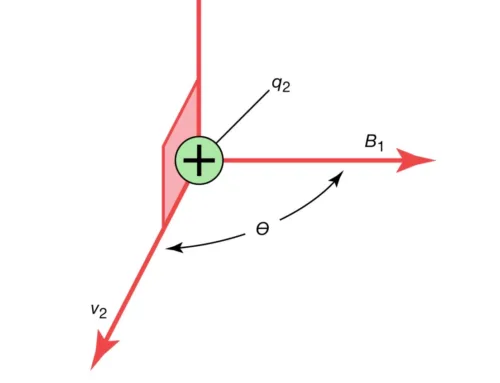
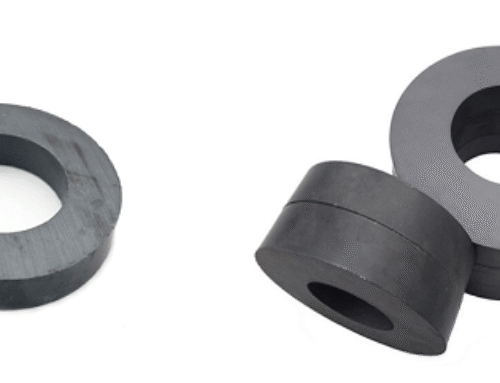
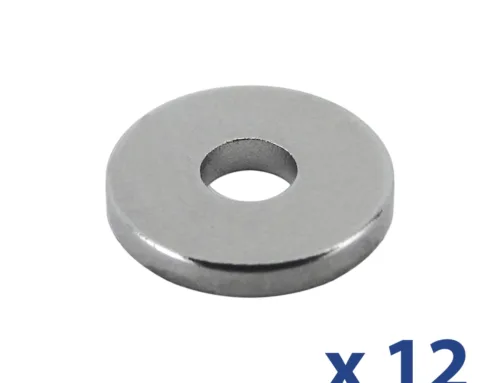
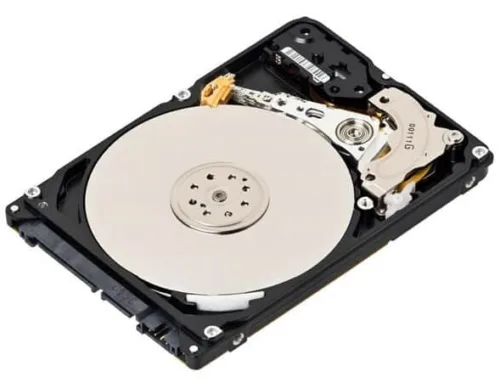
[…] For more details on types of magnetic materials, see our page on soft magnetic materials vs hard magnetic materials. […]
[…] Soft magnetic materials are optimized for applications requiring quick magnetic response and low energy loss, while hard magnetic materials provide lasting magnetic strength. More details on these categories can be found at NBAEM’s guide on soft vs hard magnetic materials. […]
[…] For more on how magnetic materials work, check out this soft vs hard magnetic materials guide. […]
[…] With their compact size and strong magnetic holding force, pot magnets make life easier, whether you’re organizing your home, crafting, or handling automotive repairs. For those interested in learning more about the different types and magnetic materials, check out NBAEM’s guide on soft magnetic materials vs hard magnetic materials. […]